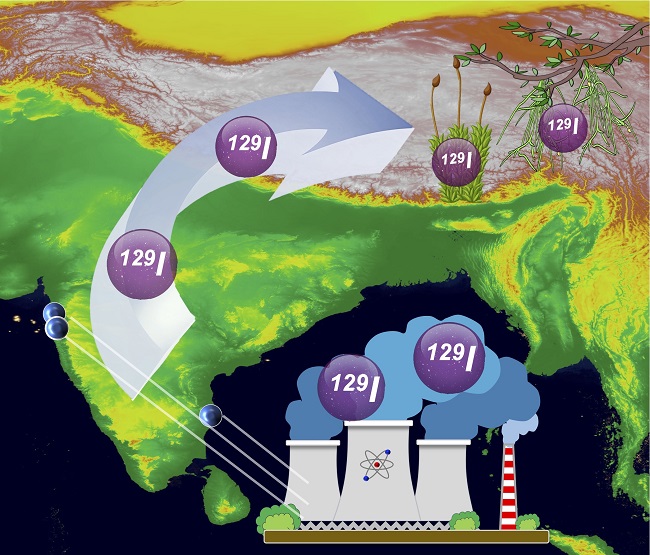Chinese Academy of Sciences
A recent study published in Environmental Science & Technology Letter has shed light on the long-range transboundary transport of radioactive iodine-129 (129I) from the Indian nuclear fuel reprocessing plants (NFRPs) to the Southern Tibetan Plateau (STP).
This study, conducted by researchers from the Institute of Earth Environment of the Chinese Academy of Sciences (CAS), provides a new understanding of the transport of airborne radioactive pollutants from low to high altitudes, and may have implications for environmental protection on the Tibetan Plateau.
The Tibetan Plateau, known as the "Third Pole of the Earth" and the "Roof of the World," is a remote, isolated, and presumably pristine region. Previous studies of radioactive contamination have focused primarily on the northern TP, leaving little knowledge of the STP. Primarily originating from human nuclear activities, iodine-129, with its properties of high volatility and radiation risk of short-lived radioiodine, serves as a key radionuclide for nuclear environmental safety monitoring.
In this study, the researchers have meticulously investigated the spatial variation of 129I in the bioindicators, moss and lichen, from the STP.
They found that 129I in the STP was significantly higher than the pre-nuclear levels and those in Chinese inland cities, but two-four orders of magnitude lower than those in the vicinity of the Indian and European NFRPs.
Analysis of the 129I discharge history in conjunction with the wind field indicates that the Indian NFRPs are the primary sources of 129I in the STP. The prevailing ISM plays a crucial role in the transport of 129I from the lowland to the high-altitude STP. The transport process is further enhanced by the summertime overlying heat pump, but is weakened by topographic blocking, forest adsorption, and cold trapping.
The spatial distribution of 129I and 127I in lichens distributed on Mt. Galongla shows that the Yarlung Zangbo Grand Canyon serves as a key transport channel.
"It is much beyond our expectation that Indian NFRPs have such a significant impact on the Tibetan Plateau. Since there are many nuclear facilities in operation and under construction in India, the radiation risk is just there. So we still need more data to find out the extent and scope of such impacts," said Dr. ZHANG Luyuan, corresponding author of this study.
This work was supported by the second comprehensive scientific expedition to the Qinghai-Tibetan Plateau, CAS and the National Natural Science Foundation of China.

Radoiactive iodine-129 released from India's nuclear fuel reprocessing plants is transported to the southern Qinghai-Tibet Plateau by long-range transboundary transport. (Image by ZHANG Luyuan)
/Public Release. This material from the originating organization/author(s) might be of the point-in-time nature, and edited for clarity, style and length. Mirage.News does not take institutional positions or sides, and all views, positions, and conclusions expressed herein are solely those of the author(s).View in full here.






